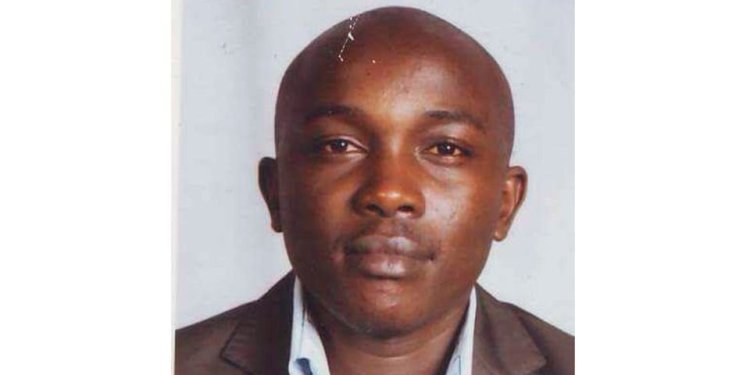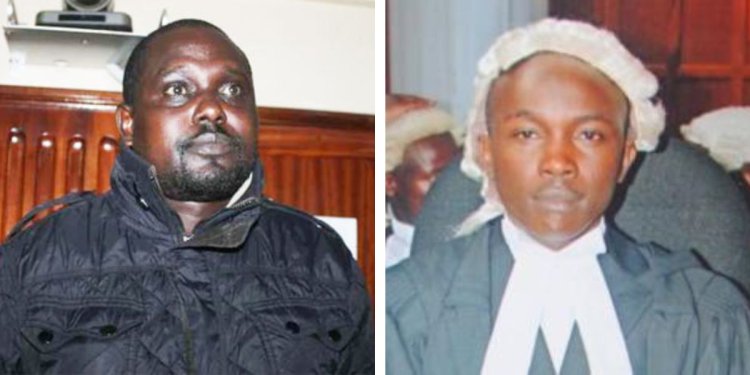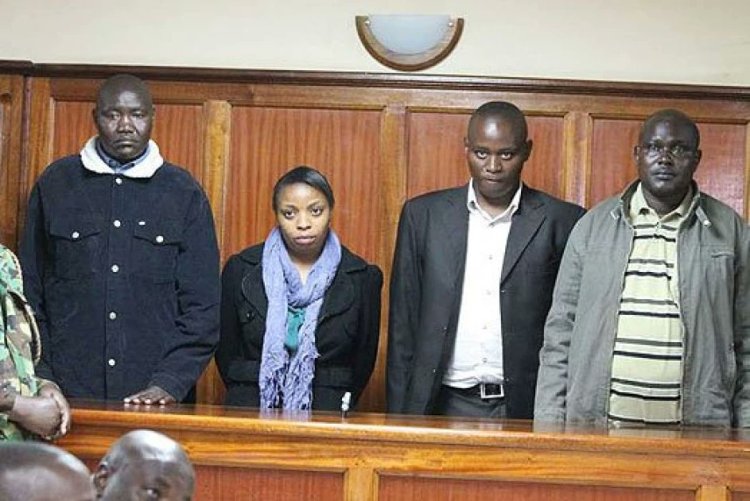Willie Kimani Murder: 7 Factors That Led To Death Sentence Of Main Suspect
During the ruling, Justice Lessit listed seven aggravating factors which...

The long-awaited and highly-anticipated sentencing of police officers Fredrick Leliman (main suspect), Stephen Cheburet and Sylvia Wanjiku and informer Peter Ngugi accused of killing lawyer Willie Kimani in 2016 was motivated by seven key grounds.
Justice Jessie Lesit spread the degree of sentences across the three cops and the police informer depending on their involvement in the murder of the lawyer as well as his client Josephat Mwendwa and taxi driver, Joseph Muiruri on June 23, 2016.
She described the crime as "a most foul murder, an execution that was most heinous" and hit Leliman with the biggest sentence of them all, being the mastermind of the crime; the death sentence.

Despite death sentences for murder in Kenya commuting to life in prison, the Supreme Court in its 2017 ruling gave judges discretion to decide if a death sentence can still be imposed. An army officer behind an attempted coup in 1982 was the last person to be executed in Kenya.
His former colleagues and co-accused Cheburet and Wanjohi were sentenced to 30 and 24 years in prison respectively while Ngugi got 20 years in jail.
During the ruling, Justice Lessit listed seven aggravating factors which led to the court decision as follows:
- The murder was intended to interfere with the cause for justice.
- The offence was committed by a group.
- The deceased were kept inside the boot of a car and taken out one at a time to be murdered. The judge said the murder was executed close by so that "the victims could hear the thumping and blows being inflicted and the screams and shouts of their colleagues as he was killed." The fact that each knew they would be the next to face the same fate, Justice Lesit noted, must have caused them extreme fear, stress and psychological torture as they awaited their turn.
- Crude weapons were used to butter the victims and create excruciating pain.
- The deceased were put in gunny and plastic bags and dumped into Athi River with the intention to conceal the murder and make the recovery of their bodies difficult.
- The murder involved flagrant and excessive use of violence on the deceased and caused damage to the persons.
- The first accused widely and clearly had a grudge against the deceased Mwenda. The judge recalled how he captured and killed Kimani and Muiruri not caring about their lives and the fact that they had not done anything to him to deserve what he did to them
Prior to the sentencing of the officers, the Directorate of Criminal Investigations (DCI) in August 2022 made public the intrigues behind the murder of Kimani, Mwenda and Muiruri who were tortured and killed after being abducted while leaving Mavoko Law Courts in Machakos County on June 23, 2016.
In the August edition of their DCI Magazine, the then George Kinoti-led investigative agency outlined how a cigarette butt, a specimen of human faeces and an empty can of an energy drink were the key leads that led detectives to Kimani’s killers.
The three items were seized from a shrub in Soweto, Mlolongo in Machakos county which the detectives confirmed to have been the murder scene.
"Detectives located the Soweto site and established that it was an open field covered with knee-high grass and acacia trees. They talked to people in a nearby residential area. It emerged that a lady had seen a motor vehicle parked by the roadside that particular (fateful) night,” the report stated.
"The site was secured and subjected to forensic evidence gathering with the help of FBI personnel. All materials gathered have been taken for analysis. They include photographs, cans of energy drink (Red Bull, cigarette filters and samples of human waste from the place where it is believed the killings took place."
The specimens were then screened for DNA and later subjected to comparison with samples obtained from the four suspects.
According to an analyst at the Government Chemist Laboratories whom the DCI calls Dr Kimani, buccal swabs were obtained from Ole Leliman, Morogo, Wanjohi and Ngugi, where the presence of biological material was to be traced in the samples collected in Soweto.
“The DNA profiles generated from the cigarette butts matched the DNA profiles generated from the reference sample Peter Ngugi. The cigarette butt proved to be the weak link for the defence and coupled with a confession by Ngugi, the court was left with no option but to convict them,” DCI said, quoting the judgement.
The Mavoko three had vanished after they were last seen at a police station in Syokimau. Kimani and Mwenda had attended a court session in Mavoko after Mwenda had filed a case against a police officer.
Two weeks later, the bodies of the three men were found nearly 100 kilometres away in a river in Ol Donyo Sabuk.
Also read: How Events Leading To Sentencing In Willie Kimani Murder Case Unfolded

The four police officers, Fredrick Leliman, Stephen Cheburet, Sylvia Wanjiku and police informer Peter Ngugi in court over the murder of lawyer Willie Kimani. /TWITTER

 admin
admin 




